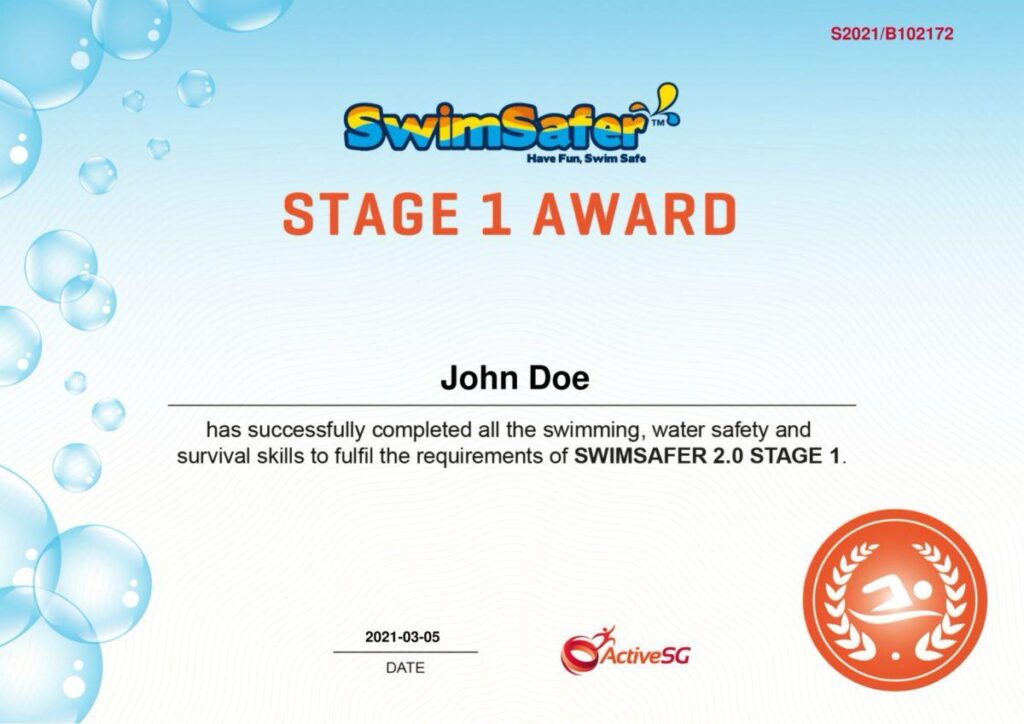Penguin Swim School | best swimming school in Singapore | expert swimming lessons in Singapore

Stage 1
Introduction to Water Skills
The objective is develop confidence and independence in the water, learn general and deep-end water safety. Techniques taught include the forward and backward movement, safe entry and exit and personal water safety.

Clothing Requirement
In Stage 1, students are first exposed to swimming while wearing clothes, particularly shorts, a t-shirt, and swimwear. This requirement is mostly in place to acquaint participants with the feeling of being in the water while fully clothed. The drag and resistance caused by clothing drastically changes how the body glides through the water.
This is important because people are probably wearing clothing in real-life scenarios, including slipping into a pool or body of water without warning. Early practice allows students to experience the extra challenge of swimming while clothed, boosting their confidence and emergency response skills from the outset of their training.
Stage 1 Test Criteria
Entries & Exits
- Slide-in entry.
- Exit using ladder and from pool edge.
Sculling & Body Orientation
- Front float (mushroom or jellyfish), 5 sec, recover to standing position.
- Back float, 5 sec, recover to a standing position.
Underwater Skills
Submerge in waist deep (student’s) water, open eyes and blow bubbles.
Movement / Swimming / Strokes
- Movement on front 10m. (alternating arms & legs and/or simultaneous arms and legs)
- Movement on back 5m. (alternating arms & legs and/or simultaneous arms and legs)
Survival & Activity Skills
- Signal distress.
- Grasp a flotation aid and float for 10 sec.
- Move to the pool’s edge (with the float).
- Exit safely from water.
Dressed in swimwear, shorts and t-shirt demonstrate:
Correctly fit a PFD, jump into the water, float for 30 seconds and then climb out of deep water.
Knowledge
- Principles of Personal Safety and Survival.
- Environmental Awareness.
- Health Awareness.
- Emergency Situations and Survival Techniques.
- Rescues.
